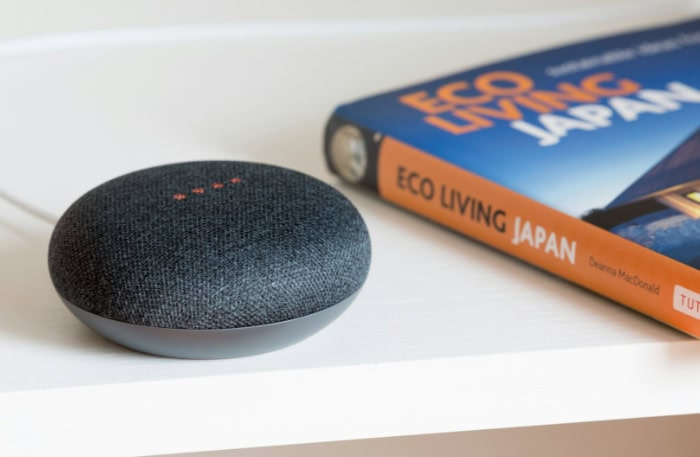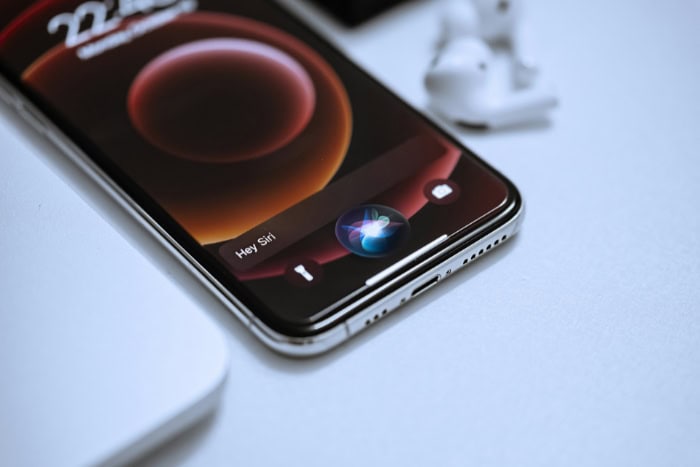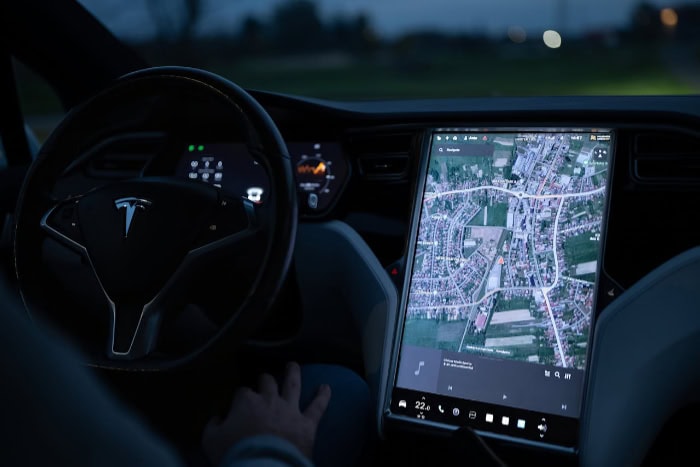How Does Voice Recognition Work? Simplifying the Complex

The ability to communicate with technology using our voice has transitioned from novelty to necessity in recent years. Voice recognition has revolutionized how we interact with devices, making everyday tasks more intuitive and accessible.
From asking a virtual assistant to set reminders to controlling an entire smart home setup without lifting a finger, this technology seamlessly merges convenience with innovation.
But have you ever stopped to wonder how these systems work? How do devices not only hear us but also understand and act on our commands?
The Basics of Voice Recognition Technology
Voice recognition refers to the ability of a system or device to process spoken language and convert it into a machine-readable format. Within this field, there are two distinct areas of focus: speech recognition and speaker recognition.
Speech recognition is concerned with understanding the content of what is being said. It focuses on identifying words, phrases, and sentences, enabling tasks like converting spoken language into text or executing commands based on specific instructions.
For instance, when you ask your phone to open an app or search for a topic, the system relies on speech recognition to process and act on your command.
Speaker recognition, on the other hand, is about identifying who is speaking. This area focuses on analyzing unique vocal characteristics, such as tone, pitch, and rhythm, to determine an individual’s identity.
It is often used for authentication purposes, such as unlocking devices with voice or securing access to sensitive accounts.
These two functionalities frequently work hand-in-hand but serve different purposes. Speech recognition primarily deals with what is being said, while speaker recognition emphasizes identifying the person behind the voice.
How It Differs from Other Input Methods
Voice recognition stands apart from more traditional forms of input like typing or touch in several meaningful ways, offering unique benefits and challenges.
Unlike text-based inputs, which require physical interaction with a device, voice recognition provides a hands-free experience. This makes it particularly useful in situations where manual operation is impractical, such as driving or multitasking.
For example, dictating a text message or setting navigation directions by voice allows users to stay focused on their primary activity without disruption.
Another distinguishing factor is its speed and convenience. Speaking is often faster than typing, especially for composing longer responses or navigating complex menus.
Voice input allows users to streamline tasks, skipping the need to scroll through options or enter lengthy strings of text.
However, voice recognition also faces hurdles that text or touch-based inputs avoid. Accents, background noise, and unclear speech can interfere with the accuracy of interpretation, making it less reliable in noisy or chaotic environments.
While text-based inputs are consistent and precise, voice recognition relies heavily on contextual factors and environmental conditions to function effectively.
Despite these challenges, voice recognition continues to advance, providing a unique and increasingly accessible way for people to connect and communicate with their devices. Its ability to transform voice into action sets it apart as a vital tool in modern technology.
How It Works

Voice recognition technology relies on a complex series of steps to transform spoken language into meaningful outputs, such as text or commands. These steps involve capturing audio, analyzing its unique features, and matching patterns using machine learning models.
By breaking this process down, we can better understand how machines interpret and respond to human speech with remarkable accuracy.
Audio Capture and Preprocessing
The process begins with capturing sound through a microphone. When a person speaks, their voice generates sound waves, which are picked up and converted into digital signals. This is the raw data that the system must analyze to determine what was said.
However, not all audio is perfectly clean. Background noise, echoes, and other disturbances often interfere with the clarity of a recording.
To address this, preprocessing techniques are applied to improve the quality of the audio signal. Noise reduction algorithms filter out unwanted sounds, while signal enhancement methods amplify important components, such as the speaker’s voice. These adjustments ensure that the input data is as clear as possible before moving to the next stage.
By cleaning up the audio data, preprocessing lays the foundation for accurate speech recognition, as high-quality input is crucial for systems to interpret spoken words correctly.
Feature Extraction
Once the audio has been processed, the system begins to analyze it in greater detail. This stage involves breaking down the sound into smaller, analyzable components.
Human speech consists of various phonemes—the smallest units of sound in a language—and other elements, like pitch and frequency patterns. These features need to be identified for the system to make sense of what was said.
One common method used during this phase is the creation of spectrograms, which are visual representations of sound frequencies over time. Spectrograms help systems map the different features of the audio, such as changes in tone or intensity, making it easier to identify speech patterns.
By isolating these features, voice recognition systems create a detailed blueprint of the audio data that can be compared against pre-existing language models.
Pattern Matching and Machine Learning Models
After extracting the relevant features, the system moves into the critical phase of matching these features against patterns it has learned. This step is where machine learning and artificial intelligence come into play.
In earlier voice recognition systems, methods like Hidden Markov Models (HMMs) were widely used to identify speech patterns. HMMs work by breaking speech down into time-based segments and assigning probabilities to possible matches for each segment.
Although still effective in some cases, more advanced techniques, such as deep learning and neural networks, have gained prominence in recent years.
Neural networks mimic the structure of the human brain, enabling systems to process vast amounts of data and spot intricate patterns. Deep learning models are trained on large datasets containing thousands of hours of recorded speech.
This allows them to learn different accents, dialects, and speaking styles, making them highly adaptable to diverse inputs.
These systems also improve over time through a process called training. By analyzing new data, they refine their models to better predict and interpret speech in future interactions.
Output Generation
The final step in the process is turning the analyzed data into a usable output. Once the system has matched the input speech to a pattern, it generates a response based on the intended action.
For example, if the goal is transcription, the system converts the recognized speech into text. Alternatively, if the input was a command, such as “Play the next song,” the system executes that action directly.
This step showcases the practical outcomes of voice recognition, bridging the gap between spoken language and real-world functionality. What began as sound waves is now transformed into meaningful outputs, whether it’s a line of text, a triggered function, or a voice-assisted response.
Applications

Voice recognition technology has expanded into numerous areas, becoming an essential tool across industries. Its ability to interpret and act on spoken commands has opened new possibilities for convenience, productivity, and accessibility.
From enhancing personal devices to supporting critical functions in healthcare and education, this technology is reshaping how tasks are performed and how people interact with their surroundings.
Personal Assistants and Smart Devices
Smart assistants like Siri, Alexa, and Google Assistant are among the most well-known applications of voice recognition. These systems allow users to perform a variety of tasks simply by speaking.
Whether it’s setting alarms, checking the weather, or sending messages, personal assistants bring a level of convenience that is hard to match.
In the context of smart homes, this technology plays an even bigger role. Voice commands can control lighting, adjust thermostats, lock doors, or even manage entertainment systems.
For example, saying “Turn off the lights in the living room” or “Play my favorite playlist” immediately carries out the desired action, eliminating the need for physical effort. This hands-free capability has transformed how people interact with everyday devices, enabling seamless multitasking and greater comfort in daily life.
Healthcare Industry
Voice recognition is making substantial contributions to healthcare by streamlining administrative tasks and improving patient care. One common use is in medical transcription.
Doctors can dictate notes and patient records, which are automatically converted into written text, saving time and reducing manual effort. This allows healthcare professionals to focus more on patient interaction rather than paperwork.
Another critical application is in patient authentication and support systems. Voice biometrics can verify a patient’s identity by analyzing their unique vocal patterns, ensuring secure access to medical information or services.
Additionally, voice-guided diagnostic tools are emerging, where patients can report symptoms verbally, and the system assists in preliminary assessments. These advancements not only improve efficiency but also enhance accessibility to medical resources.
Automotive Sector
In the automotive world, voice recognition is transforming the driving experience by enabling safer and more intuitive control over vehicle functions. Hands-free systems allow drivers to issue commands without taking their eyes off the road or their hands off the wheel.
This can include setting up navigation routes, adjusting climate controls, or making phone calls.
Modern vehicles often include voice-controlled infotainment systems, where users can play music, listen to podcasts, or access other media simply by speaking. These systems reduce distractions while providing a more engaging and connected driving experience.
As cars become smarter and more automated, voice recognition is set to play an even greater role in enhancing convenience and safety on the road.
Education and Accessibility Tools
In education, voice recognition supports various learning platforms, making them interactive and adaptable. Language learning applications, for instance, use this technology to provide real-time pronunciation feedback.
By analyzing a learner’s speech, these tools can highlight areas for improvement and encourage better communication skills.
For individuals with disabilities, voice recognition offers life-changing possibilities. Assistive technologies powered by voice allow users to operate computers, smartphones, and other devices without needing physical interaction.
For those with mobility impairments, this means being able to control their environment and access information independently. Similarly, individuals with visual impairments benefit from voice-driven systems that can read text aloud or respond to spoken inquiries.
Through its varied applications, voice recognition continues to demonstrate how it can enhance convenience, improve safety, and provide inclusive solutions for diverse needs. As its capabilities grow, its role in these fields is only becoming more impactful and essential.
Benefits

Voice recognition technology offers a wide range of benefits that make it indispensable across various aspects of life. Its ability to simplify tasks, cater to diverse needs, and enhance user experiences has positioned it as one of the most practical technological advancements of recent times.
Convenience and Efficiency
One of the most prominent advantages of voice recognition technology is the convenience it provides in daily activities. The hands-free operation enabled by voice commands is particularly valuable in scenarios where physical involvement is limited or impractical.
For example, while driving, speaking to a voice assistant to set directions, send a message, or play a song allows users to remain focused on the road without distractions. Similarly, in busy settings, such as working in the kitchen or exercising, voice commands save time and effort by eliminating the need for manual inputs.
The speed of voice input further enhances its efficiency. Speaking is often faster than typing, especially when it comes to lengthy or complex sentences.
Tasks that would otherwise require navigating through multiple menus or typing detailed responses can now be completed in seconds, simply by speaking. This increased efficiency not only reduces effort but also enables people to manage tasks more effectively, improving productivity in both personal and professional environments.
Accessibility Enhancements
Voice recognition technology has become a powerful tool in promoting accessibility, allowing individuals with mobility or visual impairments to interact with devices and systems more independently. For those with physical limitations, the hands-free nature of voice-controlled systems eliminates the need for touch-based inputs, making it easier to perform tasks such as sending emails, controlling appliances, or browsing the internet.
For individuals with visual impairments, voice recognition offers new ways to access information and navigate devices. Features like text-to-speech and voice-activated assistants provide spoken output and allow users to interact using verbal commands.
This opens up opportunities for people who might otherwise face barriers when using traditional input methods, empowering them to engage more fully with technology and their surroundings.
By removing physical and visual challenges, voice recognition technology has created a more inclusive environment, ensuring that everyone, regardless of abilities, can benefit from its capabilities.
Improved User Experience
Voice recognition technology enhances user experiences by adapting to individual preferences and creating a more personalized interaction. Modern systems are equipped with machine learning capabilities that enable them to learn from user behaviors and adapt to their speaking styles, accents, or frequently used commands.
This customization allows for smoother, more intuitive interactions over time.
For example, a virtual assistant that recognizes a user’s habits might proactively suggest actions, such as reminding them of regular appointments or adjusting smart home settings based on their daily routines. These personalized experiences make voice-controlled systems feel more natural and efficient, encouraging users to rely on them as an integral part of their daily lives.
Additionally, the conversational aspect of voice recognition creates a level of familiarity and ease that can make technology feel more approachable. By responding to queries or performing actions in a human-like manner, these systems bridge the gap between users and technology, fostering a sense of connection and continuity.
The combined benefits of convenience, accessibility, and personalization illustrate why voice recognition remains an essential tool in enhancing modern living. Its ability to cater to diverse needs while improving efficiency and usability ensures its continued impact in both personal and professional contexts.
Challenges and Limitations

Despite its many benefits, voice recognition technology is not without its challenges. While it has achieved remarkable advancements, there are several hurdles that impact its performance, security, and overall reliability.
From difficulties with accuracy to concerns around privacy and technical complexities, these limitations highlight the areas where this technology still has room to improve.
Accuracy Issues
One of the most significant challenges faced by voice recognition systems is ensuring consistent accuracy, especially when dealing with diverse forms of speech. Factors like regional accents, dialects, and varying speech patterns can sometimes confuse the system, leading to misinterpretation of commands or errors in transcription.
For instance, someone with a heavy accent or a different pronunciation style might struggle to have their speech recognized correctly.
Background noise is another obstacle. In noisy environments, such as crowded public spaces or bustling offices, the clarity of recorded audio can suffer, making it harder for the system to distinguish between the intended voice and surrounding sounds.
Speech impairments or health conditions also pose challenges, as they may result in unclear articulation or varying vocal tones that the system might not be equipped to handle.
While advancements in artificial intelligence and machine learning continue to reduce these inaccuracies, achieving universal precision remains a complex goal, particularly when accounting for the nuances of natural human speech.
Privacy Concerns
The use of voice recognition technology raises significant questions surrounding privacy and data security. For these systems to function, voice data must often be recorded, transmitted, and processed, which presents potential vulnerabilities in how this information is handled.
One of the major risks involves unauthorized access to stored voice data. If systems are not adequately secured, sensitive voice recordings could be exploited or misused.
Additionally, some users may feel uneasy about the possibility of their voice being analyzed or stored for purposes they did not explicitly consent to.
To address these concerns, many providers incorporate encryption and other security measures to protect voice data during transmission and storage. Some systems also use voice authentication for secure access, ensuring that only the intended user can operate the device.
While these precautions help mitigate risks, privacy remains a critical concern as the use of voice recognition continues to expand.
Technical Barriers
Implementing voice recognition technology involves significant technical challenges, particularly when aiming for accurate, real-time processing. These systems require a substantial amount of computational power to analyze and interpret spoken language quickly.
This can be especially demanding in devices with limited processing capabilities, such as smaller smart home gadgets or older phones.
Another limitation lies in the system's ability to understand context or complex instructions. While many systems are adept at recognizing simple phrases or commands, they can struggle with more sophisticated language structures or ambiguous queries.
For instance, commands that rely on implied meanings or require contextual awareness, such as “Remind me about this later,” can confuse even advanced systems if they lack sufficient data about the user’s intent.
These technical barriers highlight the challenge of balancing performance with convenience. While improvements in hardware and algorithms are making progress, creating a system that is universally effective without requiring constant updates or adjustments remains an ongoing task.
Conclusion
Voice recognition technology has transformed the way people connect with devices, offering an efficient and innovative method of interaction that spans personal, professional, and accessibility-focused applications. From powering hands-free convenience in smart homes and vehicles to enhancing assistive tools for individuals with disabilities, its impact is undeniably far-reaching.
Despite its impressive capabilities, challenges such as accuracy in diverse environments, privacy risks, and technical constraints highlight the complexities of refining such systems. Addressing these limitations is essential as technology continues advancing toward a more seamless and secure user experience.
By bridging the gap between spoken language and digital action, voice recognition has reshaped human-computer interaction. Its expanding role across industries signals a future where voice-driven systems will play an even greater part in simplifying lives and improving accessibility for all.


